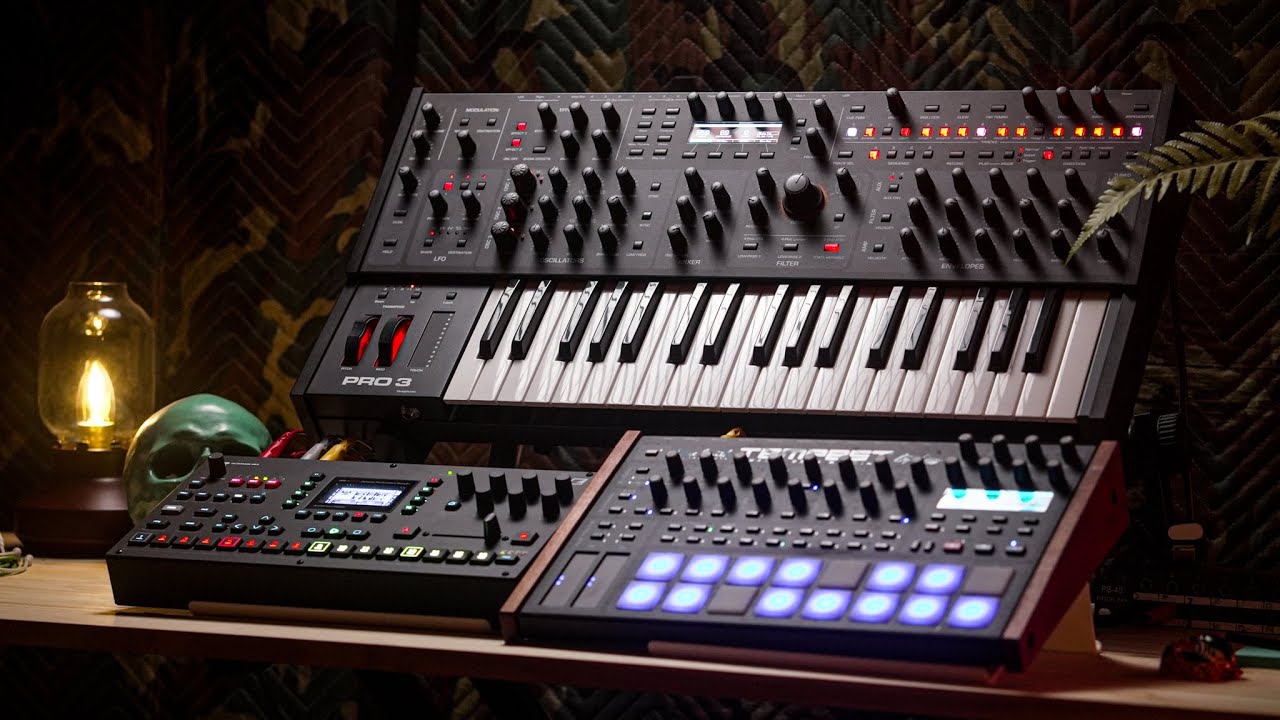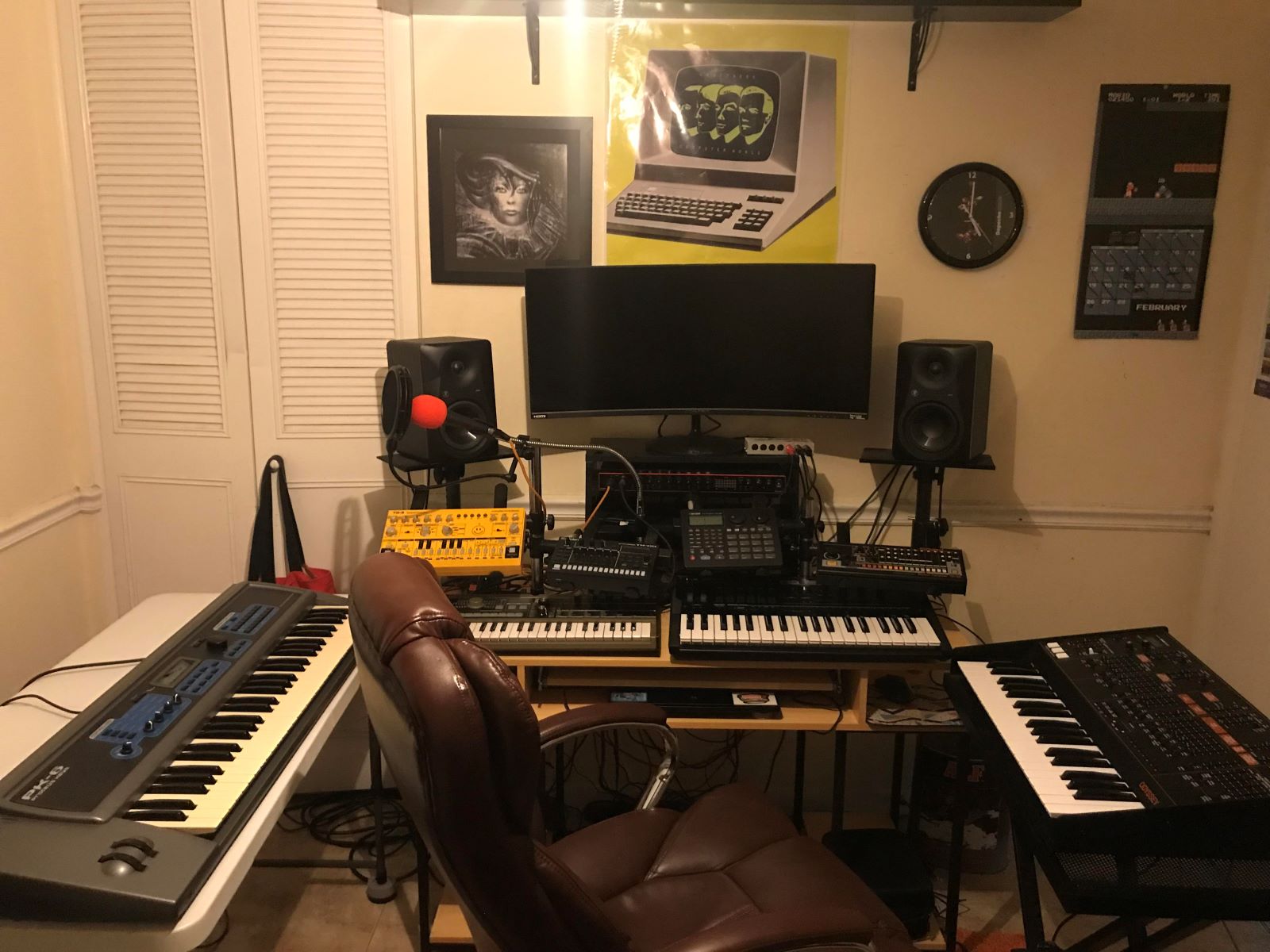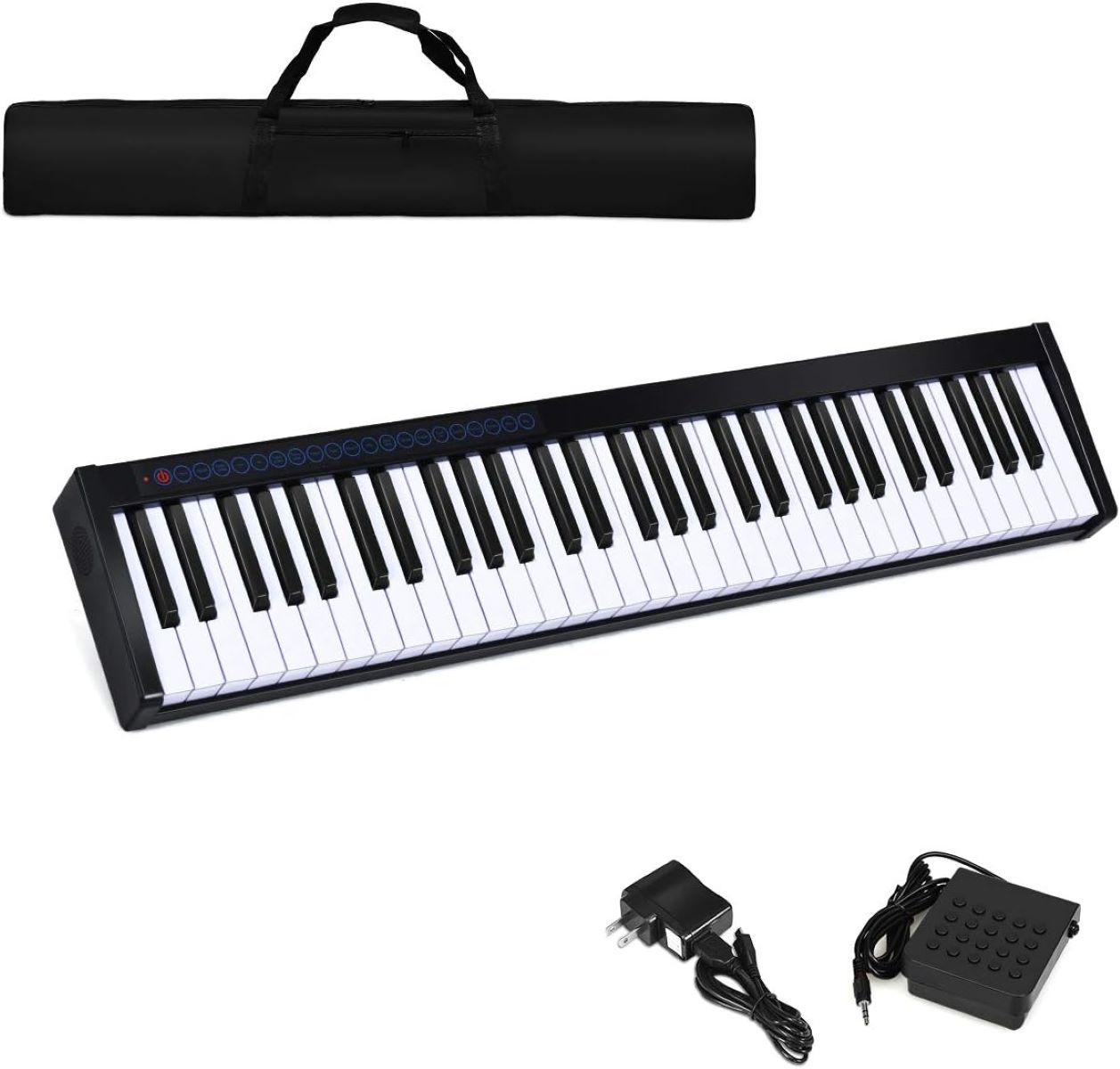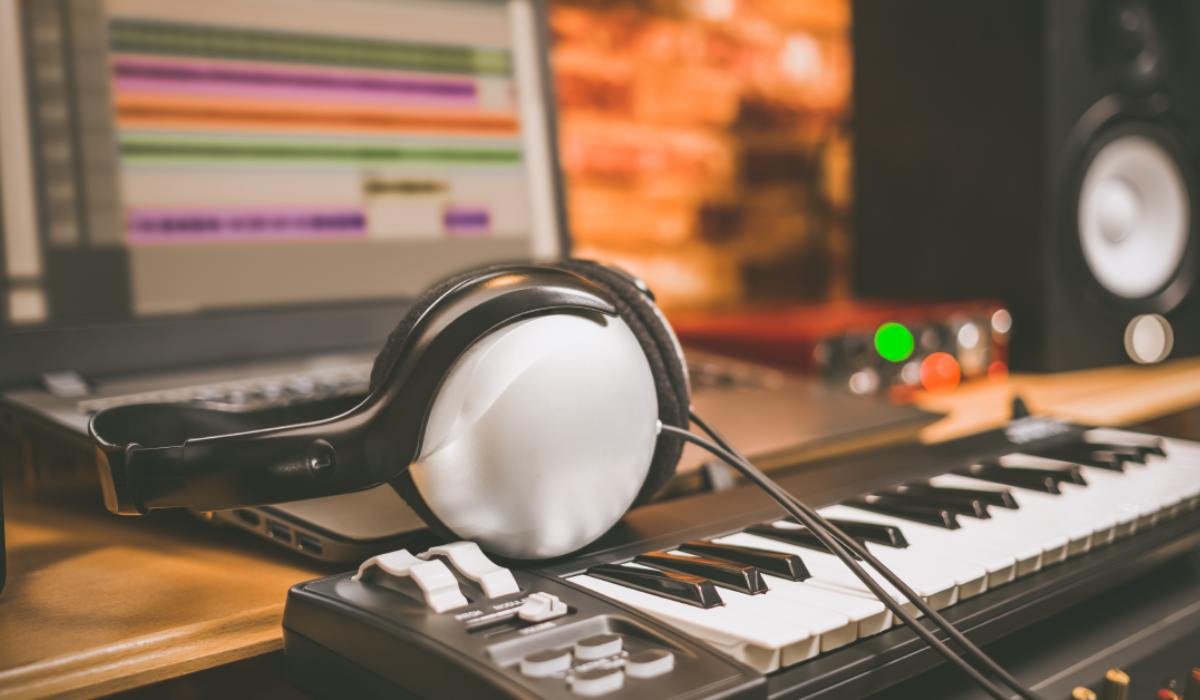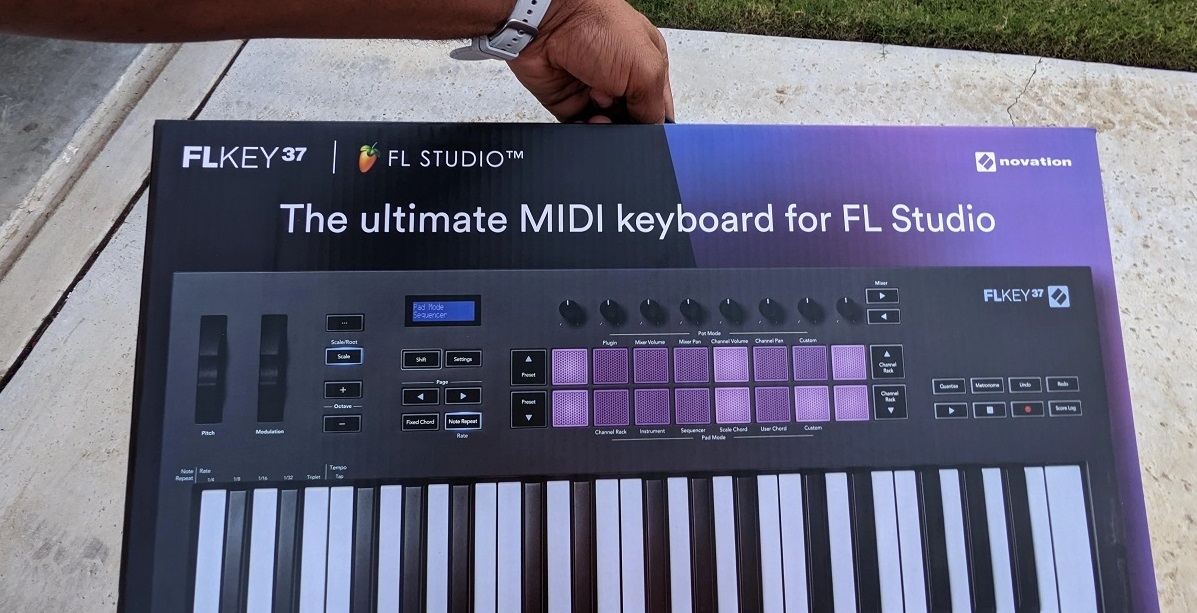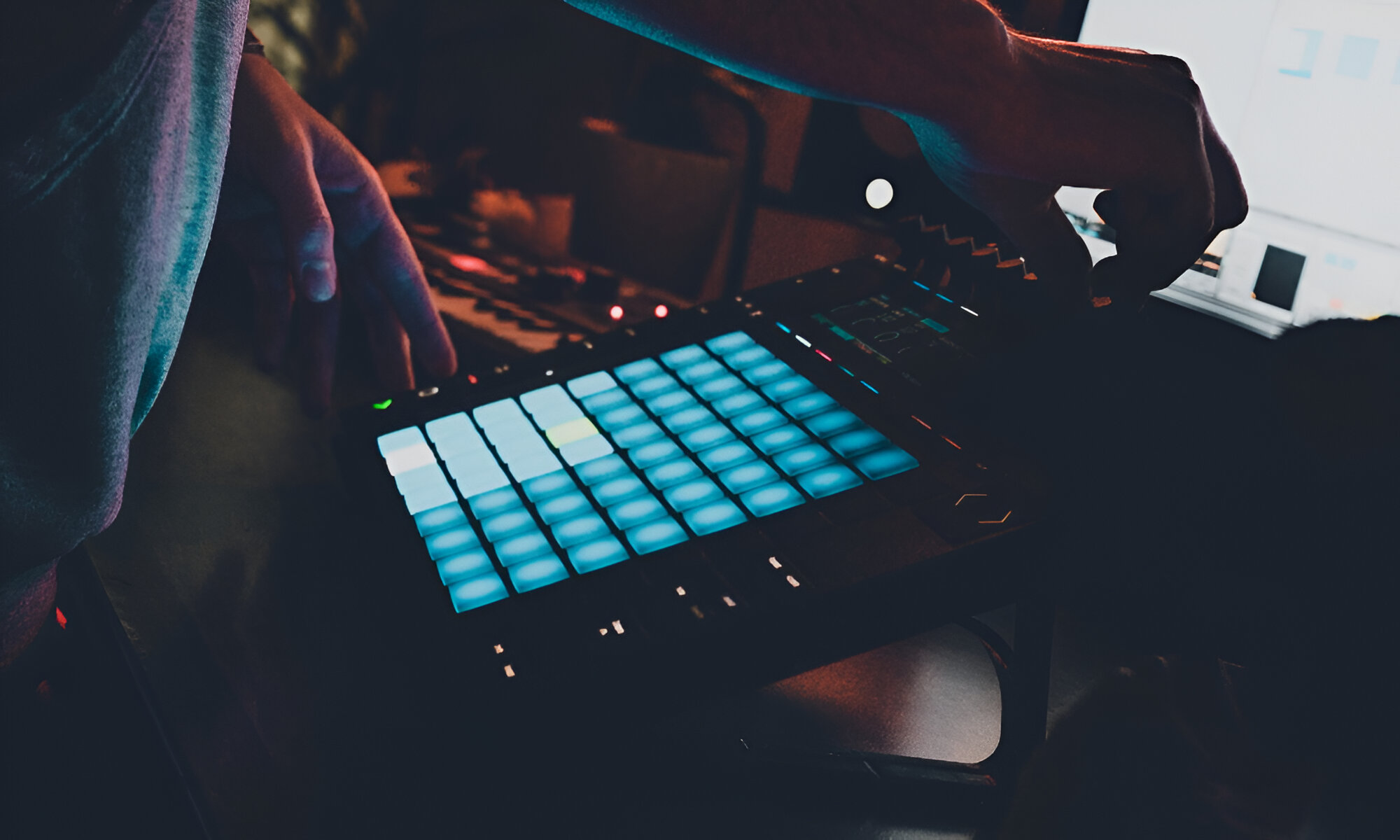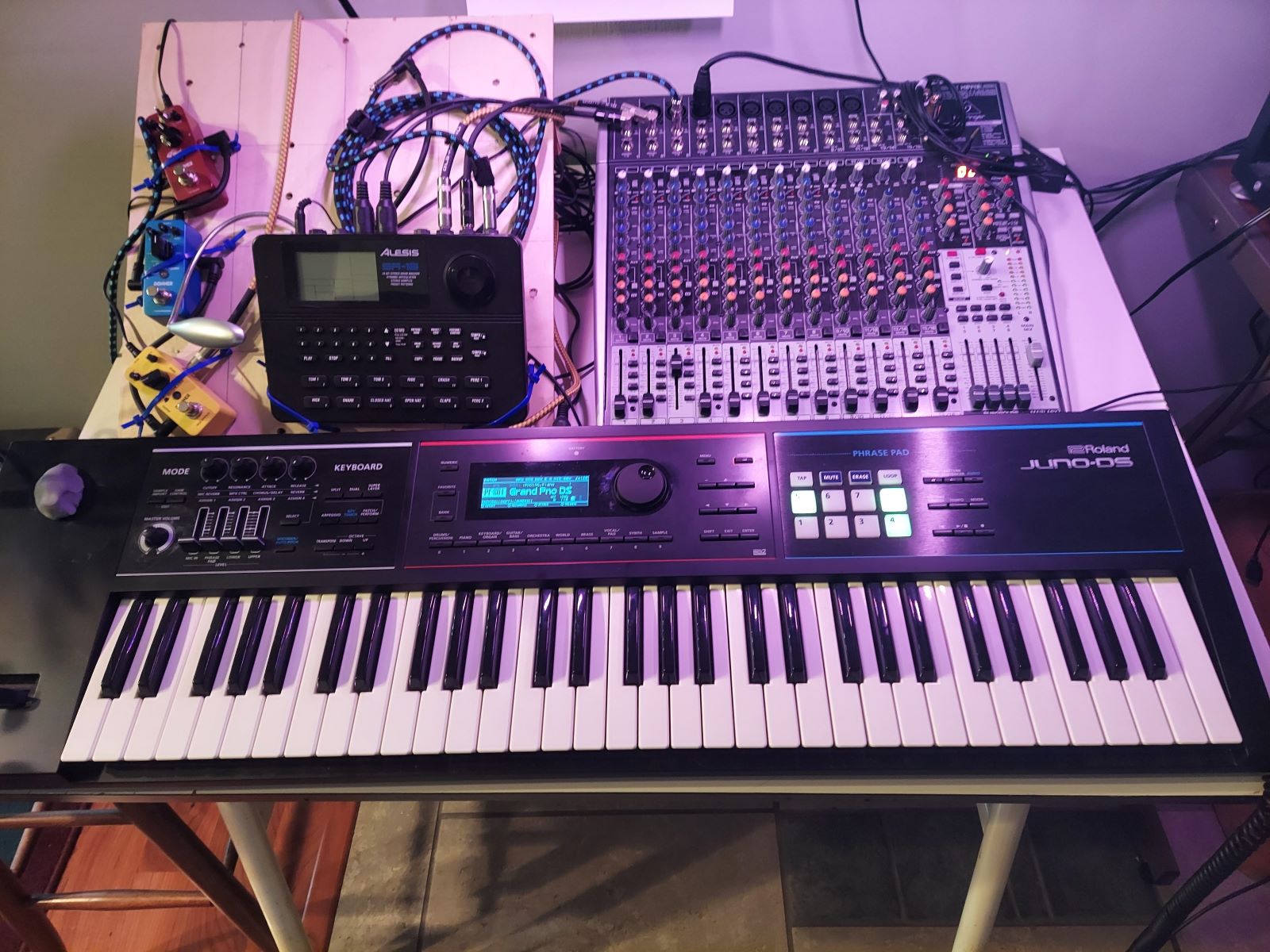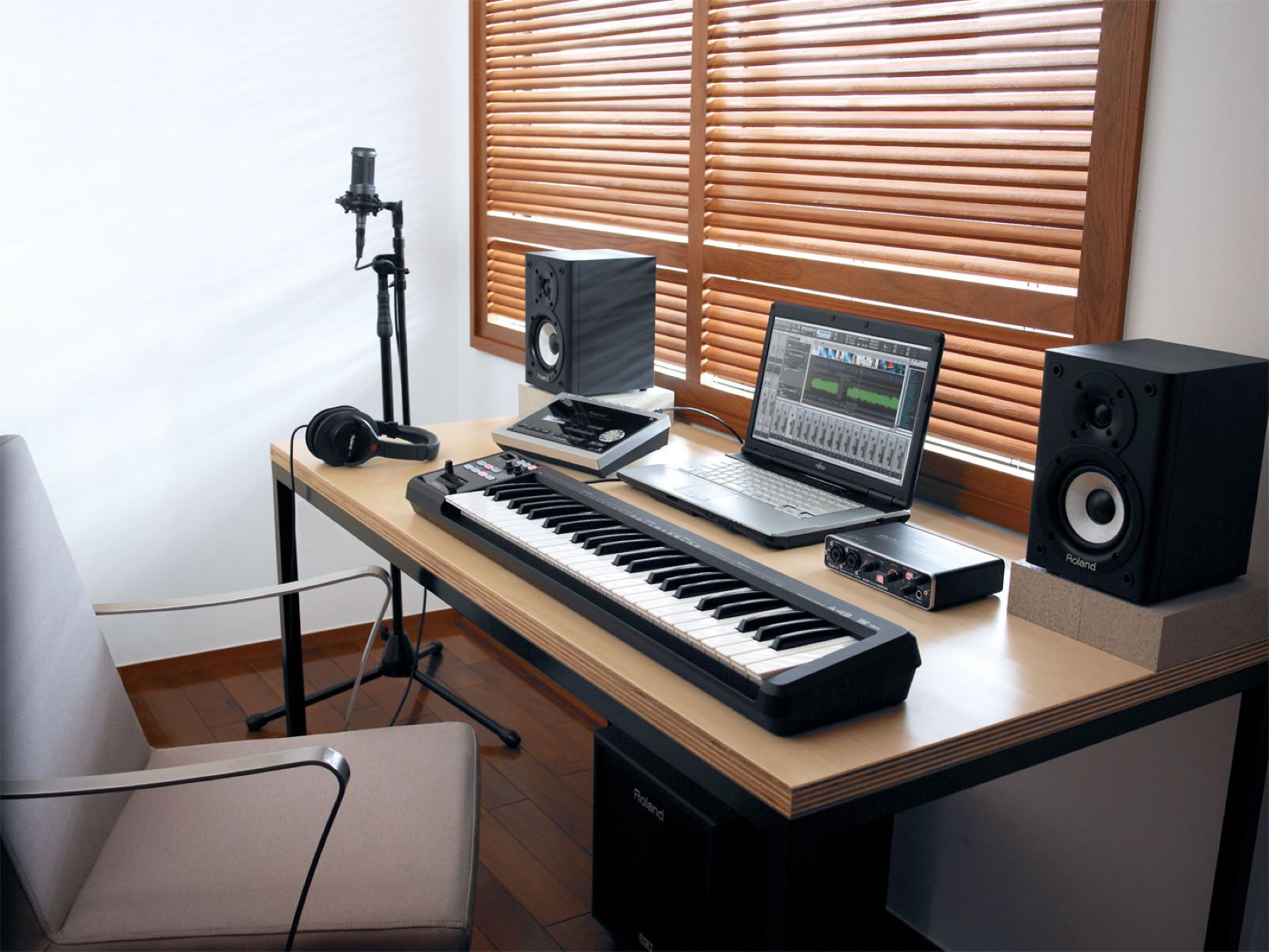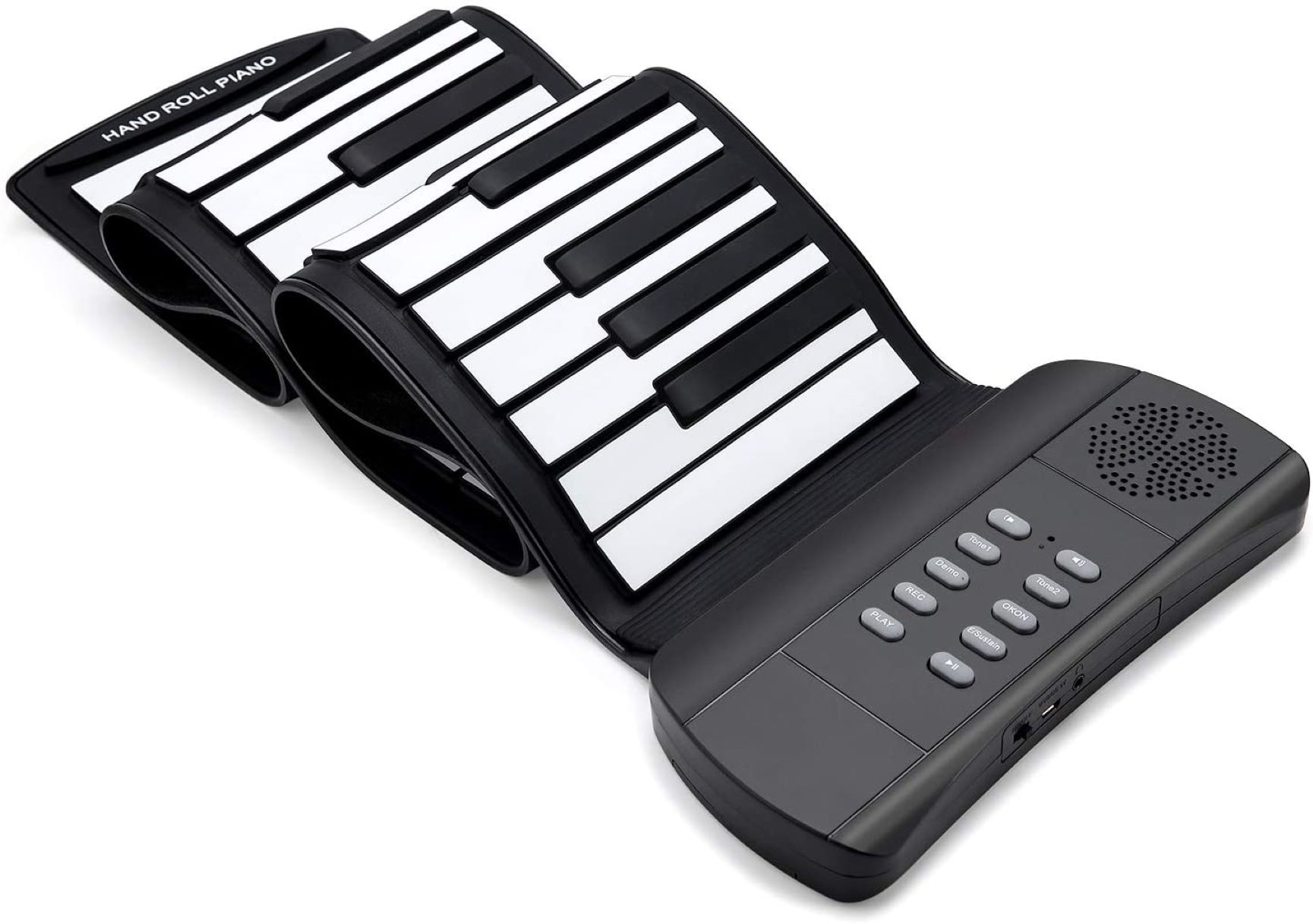Introduction
Are you a musician looking to expand the capabilities of your piano keyboard? One exciting possibility is using it as a drum machine. By leveraging the diverse sounds and rhythms available on your keyboard, you can unlock a world of creative possibilities, whether you're a solo performer, a songwriter, or a producer. In this guide, we'll explore how to transform your piano keyboard into a versatile drum machine, allowing you to craft dynamic and engaging musical arrangements.
The fusion of piano and percussion opens up a realm of expressive potential, enabling you to infuse your music with captivating rhythms and textures. Whether you're drawn to the pulsating beats of electronic dance music, the intricate patterns of jazz, or the driving force of rock and pop, integrating drum sounds into your keyboard playing can elevate your musical compositions to new heights.
In the following sections, we'll delve into the essential steps for utilizing your piano keyboard as a drum machine. We'll cover the process of setting up your keyboard for this purpose, selecting the right sounds to achieve the desired impact, creating compelling rhythms and patterns, incorporating effects and modulations to enhance the sonic landscape, and recording and looping your performances. By the end of this guide, you'll be equipped with the knowledge and techniques to seamlessly integrate drum sounds into your keyboard playing, enriching your musical endeavors with a dynamic rhythmic foundation.
Embark on this journey of discovery as we unveil the transformative potential of your piano keyboard, empowering you to unleash your creativity and craft immersive musical experiences. Let's dive into the world of piano-driven percussion and unlock the boundless opportunities that await at the intersection of melody and rhythm.
Setting Up Your Piano Keyboard
Before delving into the realm of using your piano keyboard as a drum machine, it’s essential to ensure that your setup is optimized for this creative endeavor. The first step is to connect your keyboard to a computer, synthesizer, or sound module that offers a diverse array of percussion sounds. Many keyboards feature USB or MIDI connections, enabling seamless integration with external devices to access an extensive library of drum and percussion samples.
Once your keyboard is connected, familiarize yourself with its sound selection capabilities. Explore the built-in sound library or consider utilizing software plugins to expand your sonic palette. Look for drum kits, individual percussion instruments, and electronic sounds that resonate with your musical vision. By curating a collection of sounds that inspire you, you’ll lay the foundation for crafting compelling rhythmic arrangements.
Furthermore, it’s beneficial to map the drum sounds to specific keys or zones on your keyboard for intuitive and efficient performance. This can be achieved through MIDI mapping or keyboard customization features, allowing you to trigger different drum sounds with ease as you play. Consider organizing the sounds in a logical manner, such as grouping kicks, snares, hi-hats, and percussion elements within comfortable reach, enabling seamless transitions between different rhythmic components.
Additionally, explore the potential for real-time sound manipulation and performance control. Some keyboards offer features such as assignable knobs, sliders, and modulation wheels that can be utilized to add expressive nuances to your drum performances. Experiment with adjusting parameters such as pitch, filter cutoff, and resonance in real time, infusing your drum patterns with dynamic variations and sonic textures.
By meticulously setting up your piano keyboard to harness the full spectrum of drum sounds and performance capabilities, you’ll lay the groundwork for a seamless and immersive drum machine experience. This preparatory phase is pivotal in ensuring that your keyboard becomes a versatile canvas for rhythmic exploration, empowering you to seamlessly integrate percussion elements into your musical repertoire.
Choosing the Right Sounds
When utilizing your piano keyboard as a drum machine, the selection of sounds plays a pivotal role in shaping the sonic identity of your rhythmic compositions. Whether you’re aiming for the punchy impact of classic drum kits, the futuristic allure of electronic percussion, or the organic textures of world instruments, the sonic palette at your disposal can greatly influence the mood and character of your music.
Begin by exploring the diverse range of drum and percussion sounds available on your keyboard or within connected sound modules and software. Traditional drum kits encompassing kick drums, snares, toms, and cymbals provide a foundation for crafting rhythmic backdrops, while electronic and synthesized percussion sounds offer boundless possibilities for creating innovative and genre-defying rhythms.
Consider the tonal qualities and timbral characteristics of the sounds you select. Are you drawn to the warmth and resonance of acoustic drums, the crisp and precise nature of electronic samples, or the hybrid fusion of both worlds? By discerning the sonic attributes that resonate with your artistic vision, you can curate a collection of sounds that harmonize with your musical style and creative aspirations.
Furthermore, explore the potential for layering and blending different drum sounds to construct rich and textured rhythmic landscapes. Experiment with combining acoustic and electronic elements, blending traditional percussion with unconventional sound sources, and infusing your compositions with depth and complexity. The art of sound selection extends beyond individual samples, encompassing the interplay and juxtaposition of diverse sonic elements to evoke emotive and captivating rhythms.
As you navigate the sonic tapestry of drum sounds at your disposal, keep an open mind to experimentation and discovery. Embrace the process of auditioning and refining sounds, seeking those that resonate with your musical identity and inspire creative expression. By meticulously curating a sonic palette that aligns with your artistic vision, you’ll empower yourself to craft immersive and evocative rhythmic compositions that captivate listeners and elevate your musical endeavors.
Creating Rhythms and Patterns
With your piano keyboard transformed into a drum machine, the realm of rhythmic exploration beckons, offering a canvas for crafting captivating patterns and grooves. Whether you’re drawn to the infectious pulse of dance music, the intricate polyrhythms of world percussion, or the driving force of rock and pop, the ability to create compelling rhythms is at your fingertips.
Begin by familiarizing yourself with the rhythmic potential of your keyboard, exploring the layout of drum sounds and their corresponding keys or triggers. As you delve into the world of rhythm, consider the foundational elements of drum patterns, including kick and snare placements, hi-hat articulations, and percussive accents. By internalizing these rhythmic building blocks, you’ll gain the fluency to construct cohesive and engaging patterns.
Experiment with different time signatures, tempos, and rhythmic feels to imbue your compositions with diversity and dynamism. Whether you’re crafting driving four-on-the-floor beats, syncopated grooves, or intricate polyrhythmic textures, the versatility of your piano keyboard as a drum machine allows you to traverse a wide spectrum of rhythmic expressions.
Furthermore, embrace the potential for real-time performance and improvisation as you sculpt rhythmic arrangements. Leverage the expressive capabilities of your keyboard, such as velocity sensitivity and aftertouch, to infuse your drum performances with nuanced dynamics and emotive articulations. By channeling the spirit of live percussion performance, you can imbue your rhythms with a sense of vitality and spontaneity.
Additionally, explore the art of pattern sequencing and arrangement, crafting evolving and dynamic drum sequences that unfold over time. Many keyboards offer pattern sequencers or arpeggiators that enable you to program intricate rhythmic motifs and variations, empowering you to construct multi-layered and evolving drum patterns that captivate listeners and drive the momentum of your musical compositions.
As you embark on the journey of creating rhythms and patterns with your piano keyboard as a drum machine, embrace the boundless creativity and expressive potential at your disposal. Whether you’re crafting infectious dance grooves, intricate polyrhythmic textures, or driving rock beats, the fusion of piano and percussion opens up a world of rhythmic possibilities, empowering you to infuse your musical compositions with captivating and dynamic rhythms.
Adding Effects and Modulations
As you harness the rhythmic potential of your piano keyboard as a drum machine, the integration of effects and modulations emerges as a transformative tool for shaping the sonic landscape of your percussion performances. By leveraging a diverse array of audio effects and modulation techniques, you can imbue your drum sounds with depth, movement, and sonic character, elevating your rhythmic compositions to new heights of creativity and expression.
Begin by exploring the realm of audio effects available within your keyboard or connected sound modules. Traditional effects such as reverb, delay, and chorus can bestow a sense of spatial depth and dimension to your drum sounds, enveloping them in immersive and evocative sonic environments. Experiment with different reverb settings to create the illusion of varied acoustic spaces, from intimate rooms to expansive halls, enhancing the sonic presence of your percussion performances.
Furthermore, consider the application of dynamic processing effects such as compression and gating to sculpt the transient impact and sustain of your drum sounds. By refining the dynamics and envelope of individual percussion elements, you can achieve a cohesive and polished rhythmic foundation that drives the momentum of your musical arrangements.
Delve into the realm of modulation effects, such as flanger, phaser, and tremolo, to infuse your drum sounds with movement and textural variations. These effects can impart a sense of rhythmic undulation and sonic intrigue, adding a layer of expressive depth to your percussion performances. Experiment with subtle modulation settings to imbue your rhythms with a sense of fluidity and animation, enhancing the dynamic character of your drum patterns.
Additionally, embrace the potential for real-time performance control and modulation manipulation. Many keyboards offer expressive tools such as pitch bend, modulation wheels, and aftertouch, enabling you to add spontaneous and nuanced modulations to your drum performances. By harnessing these expressive capabilities, you can infuse your rhythms with a sense of organic and dynamic evolution, captivating listeners with evolving sonic textures and tonal variations.
As you venture into the realm of adding effects and modulations to your drum sounds, embrace the spirit of experimentation and sonic exploration. By leveraging these transformative tools, you’ll unlock the potential to craft immersive and evocative rhythmic compositions that captivate listeners and elevate your musical expressions to new horizons.
Recording and Looping
Once you’ve sculpted compelling rhythms and textures with your piano keyboard as a drum machine, the ability to capture and manipulate these performances through recording and looping opens up avenues for musical exploration and arrangement. Whether you’re crafting intricate drum patterns, dynamic percussive textures, or evolving rhythmic motifs, the integration of recording and looping capabilities empowers you to seamlessly capture and iterate upon your rhythmic ideas.
Begin by familiarizing yourself with the recording features of your keyboard or connected recording devices. Many keyboards offer onboard recording functionality, enabling you to capture your drum performances directly within the instrument. Alternatively, you can utilize external recording software and hardware to capture the audio output of your keyboard, providing flexibility in recording and editing capabilities.
Explore the potential for multitrack recording, allowing you to layer and sequence diverse drum performances to construct intricate and dynamic rhythmic arrangements. By leveraging the power of multitrack recording, you can craft compelling drum compositions with layered textures, varied rhythmic elements, and nuanced percussion performances, enriching your musical expressions with depth and complexity.
Furthermore, embrace the art of looping as a means of capturing and iterating upon rhythmic motifs and patterns. Many keyboards offer built-in looping functionality, enabling you to seamlessly capture and repeat rhythmic phrases, creating dynamic and evolving rhythmic backdrops for your musical compositions. Experiment with creating rhythmic loops of varying lengths and complexities, allowing you to construct immersive and evolving drum arrangements that drive the momentum of your musical creations.
As you venture into the realm of recording and looping with your piano keyboard as a drum machine, consider the potential for real-time performance and improvisation during the recording process. Embrace the spontaneity of live drum performance, leveraging the expressive capabilities of your keyboard to infuse your recordings with dynamic variations, nuanced articulations, and emotive rhythmic flourishes.
By seamlessly integrating recording and looping capabilities into your rhythmic explorations, you’ll unlock the potential to craft immersive and dynamic drum compositions that captivate listeners and drive the momentum of your musical arrangements. Whether you’re capturing intricate rhythmic motifs, layering diverse percussion performances, or crafting evolving rhythmic textures, the fusion of recording and looping empowers you to unleash the full expressive potential of your piano keyboard as a versatile drum machine.
Conclusion
Embarking on the journey of utilizing your piano keyboard as a drum machine unveils a realm of rhythmic creativity and sonic exploration, empowering you to seamlessly integrate percussion elements into your musical compositions. By transforming your keyboard into a versatile rhythmic canvas, you’ve embarked on a path of boundless potential, infusing your music with captivating rhythms and dynamic textures.
The process begins with meticulous setup, ensuring that your keyboard is optimized to harness a diverse array of drum sounds and performance capabilities. By mapping drum sounds to specific keys or zones, exploring real-time sound manipulation, and familiarizing yourself with the rhythmic potential of your instrument, you’ve laid the groundwork for a seamless and immersive drum machine experience.
Furthermore, the art of sound selection plays a pivotal role in shaping the sonic identity of your rhythmic compositions. Whether you’re drawn to the punchy impact of classic drum kits, the futuristic allure of electronic percussion, or the organic textures of world instruments, curating a collection of sounds that resonate with your artistic vision empowers you to craft compelling and evocative rhythmic arrangements.
As you delve into the realm of creating rhythms and patterns, the fusion of piano and percussion opens up a world of rhythmic possibilities. Whether you’re crafting infectious dance grooves, intricate polyrhythmic textures, or driving rock beats, the ability to experiment with different time signatures, tempos, and rhythmic feels empowers you to traverse a wide spectrum of rhythmic expressions.
Moreover, the integration of effects and modulations emerges as a transformative tool for shaping the sonic landscape of your percussion performances. By leveraging a diverse array of audio effects and modulation techniques, you can imbue your drum sounds with depth, movement, and sonic character, elevating your rhythmic compositions to new heights of creativity and expression.
Finally, the fusion of recording and looping capabilities empowers you to seamlessly capture and iterate upon your rhythmic ideas, allowing you to craft compelling drum compositions with layered textures, varied rhythmic elements, and nuanced percussion performances, enriching your musical expressions with depth and complexity.
As you continue to explore the intersection of piano and percussion, the fusion of rhythmic creativity and sonic innovation will continue to enrich your musical journey, empowering you to craft immersive and dynamic drum compositions that captivate listeners and drive the momentum of your musical arrangements. The transformative potential of your piano keyboard as a versatile drum machine invites you to unleash the full expressive power of rhythm and percussion, infusing your music with captivating and dynamic rhythms.







